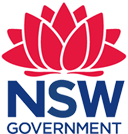Expressing your breastmilk
It is important for you to know how to express your breastmilk. Hand expressing or using an electric or manual breast pump are all effective methods to express breastmilk for your baby.
When you may need to express:
- If you are separated from your baby
- You are unable to give a breastfeed at the time your baby wants to feed
- Your baby has difficulties attaching, and is demanding a feed
- To soften your areola (darkened skin around nipple) to make attaching easier
- To increase your milk supply
How to hand express:
- Prepare for hand expressing in a comfortable, relaxed and private environment.
- Wash your hands with soap and water.
- Gently massage your breasts, starting from the top and stroking towards your nipple, not forgetting the underneath.
- Hold a clean container under your breast to collect your milk.
- Put your thumb and first finger opposite each other on your areola (coloured area surrounding your nipple), see picture above.
- Gently push back towards the centre of your breast and rib cage, squeezing your thumb and finger together with the pad of your thumb and finger meeting behind the nipple. Repeat in a rhythmic action until the milk starts to flow. It should not be painful.
- When the flow stops move your finger and thumb around your areola and repeat steps 4-6.
- Aim to express the breasts for about 10- 15 mins each side.
- Then change to the other breast and repeat the above steps.
- You may swap to the other breast after about 5 minutes if the milk has stopped flowing, or your hands are tired. By changing back and forth from breast to breast you may be able to improve the flow of milk and encourage more let downs, particularly if your supply is low.
Expressing using Electric Breast Pump:
- Hand expressing is more effective at collecting colostrum in the first 48 hours after birth, although a breast pump can be used to stimulate the transition to mature milk.
- Before using the breast pump wash your hands and gently massage your breasts as in steps 1 -2 above.
- Gently hand express for a minute or two to get your milk flowing.
- Centre the funnel of the pump over your nipple and follow manufacturer’s instructions.
- If pump has adjustable suction pressures always start on minimum/low and build up to a comfortable level. If there is a rate setting, start at a fast rate, reducing the rate as milk flows.
- Your nipple should move freely in the pump flange without being squashed in around the edge.
- Higher pressures can be used as long as they cause no discomfort.
- The pump, if used correctly, should not cause pain, and will become easier to use with practice.
Note: The volume of milk you express is not a true indication of how much milk you are making.
Source: Parent Handouts SWSLHD Breastfeeding Guidelines (August 2020)
For more information visit the Australian Breastfeeding Association website at https://www.breastfeeding.asn.au/



